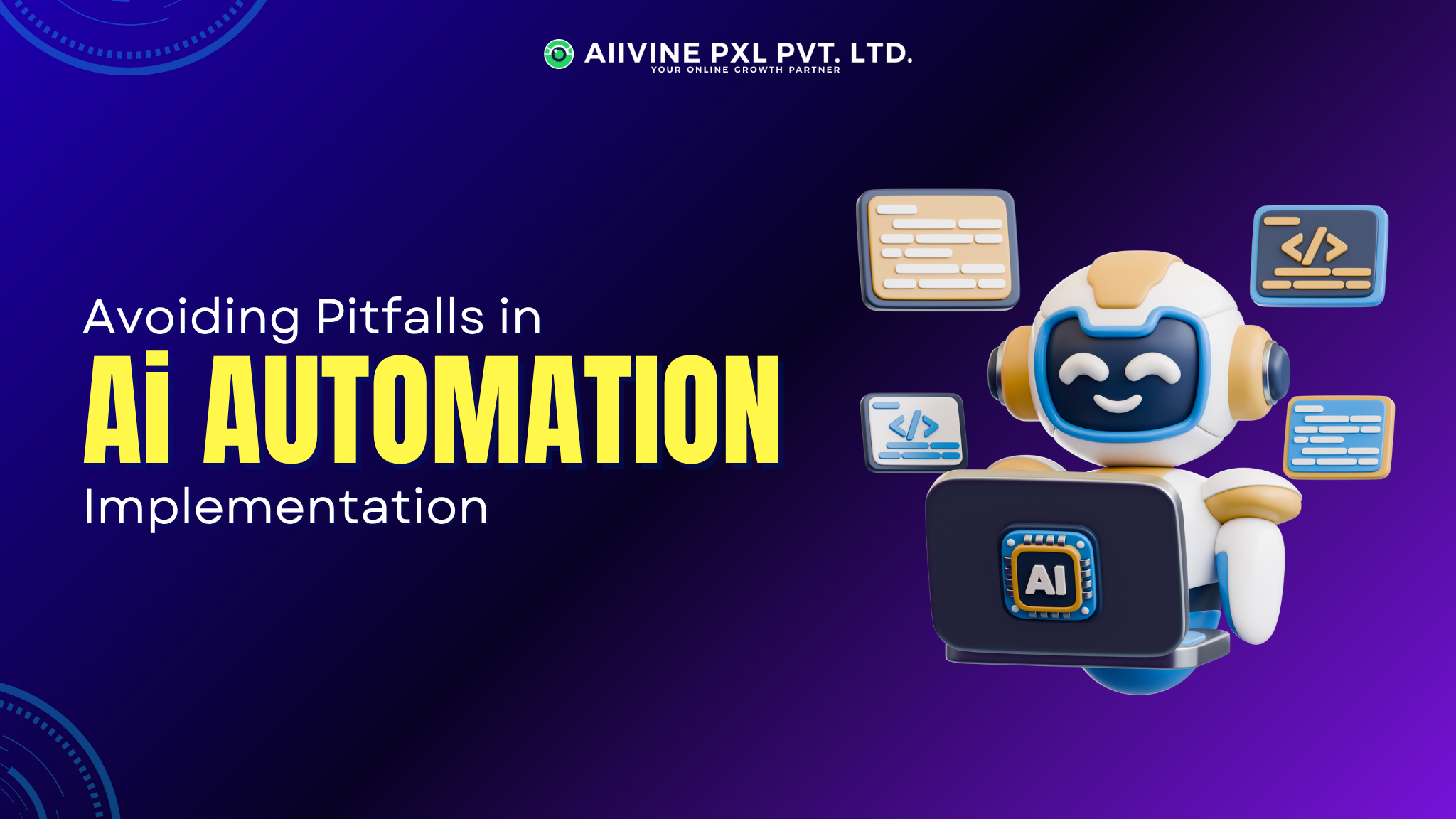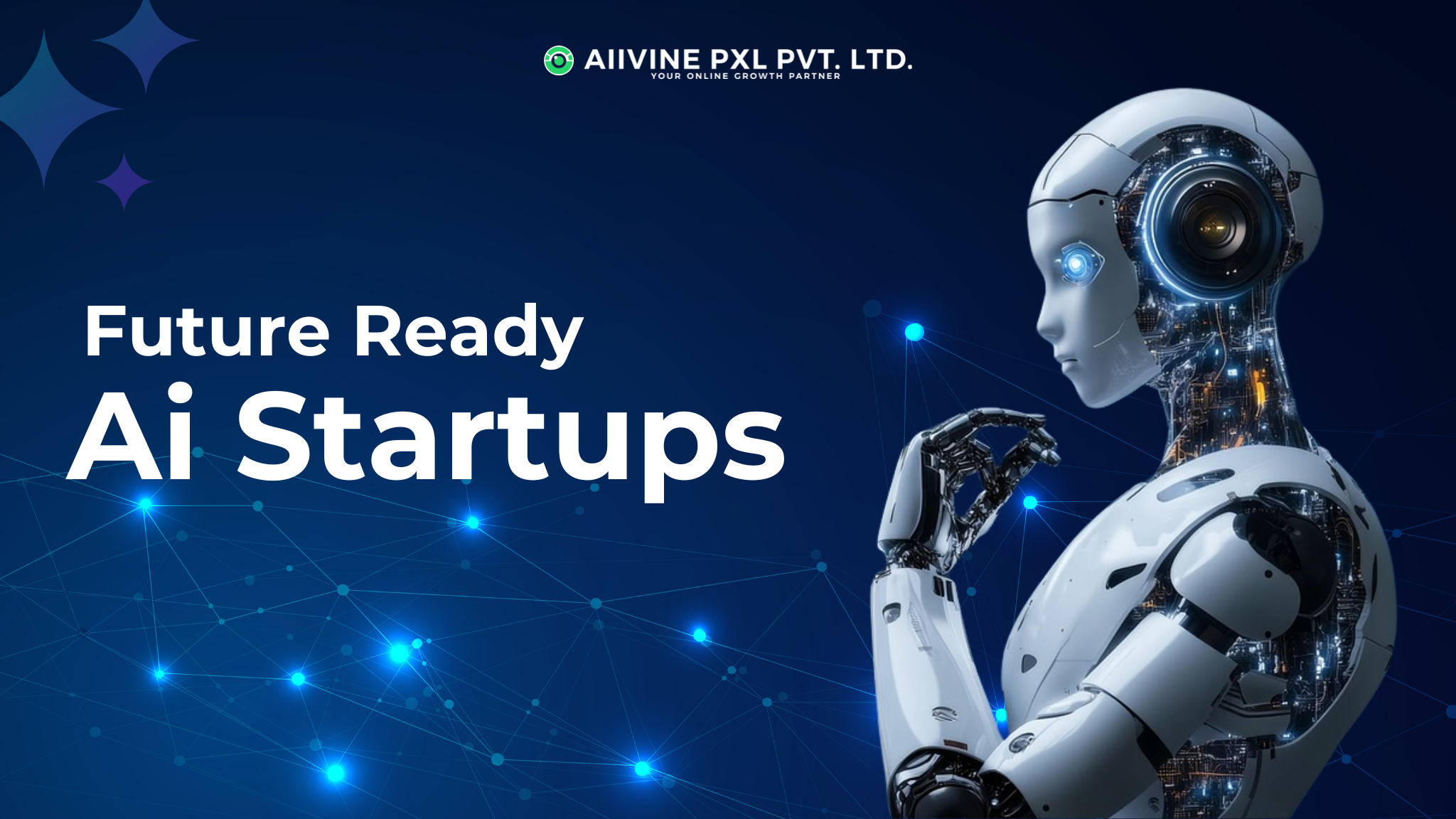Artificial Intelligence (AI) and automation are revolutionizing how businesses operate — from marketing and sales to customer service and operations. But while AI offers efficiency, scalability, and insights, improper implementation can lead to costly failures.
This blog uncovers the most common pitfalls in AI automation implementation and provides actionable strategies to ensure your business benefits from automation instead of being trapped by it.
Understanding AI Automation in Business
AI automation integrates artificial intelligence with process automation to perform repetitive, data-driven tasks with minimal human input. This includes:
- Marketing automation (like Facebook Ads and Google Ads targeting)
- Customer support (AI chatbots, CRM automations)
- Operations (inventory, finance, scheduling systems)
- Data analytics (predictive analysis, trend forecasting)
When done right, AI automation saves time, reduces human error, and scales results. But when done wrong, it can lead to inefficiencies, poor decision-making, and wasted marketing budgets.
Top Pitfalls in AI Automation Implementation
Let’s explore the most common mistakes businesses make — and how to avoid them.
1. Lack of Clear Objectives
Many organizations jump into AI automation without defining what they actually want to achieve.
Simply implementing AI tools for the sake of being “modern” is not a strategy.
Example:
A company sets up Facebook Ads automation but fails to define KPIs like lead cost, conversion rate, or audience segments. The result? High ad spend and poor ROI.
How to Avoid It:
- Define measurable goals (e.g., reduce manual ad optimization by 50%)
- Align AI automation with business outcomes, not just trends
- Use performance dashboards to track success metrics
2. Poor Data Quality and Management
AI systems rely on data. If your data is inconsistent, outdated, or unstructured, automation will only amplify those issues.
In marketing, inaccurate customer data can cause AI to target irrelevant audiences — wasting budget in Facebook Ads or Google Ads campaigns.
How to Avoid It:
- Clean and verify your datasets regularly
- Use data integration tools (like Zapier or HubSpot) for consistency
- Monitor input accuracy to ensure AI models perform effectively
3. Over-Automation Without Human Oversight
AI automation doesn’t mean human elimination.
Many companies make the mistake of handing complete control to AI systems — assuming they’ll run flawlessly.
But AI lacks context and creativity. Without human oversight, automation may lead to robotic communication or missed customer intent.
Example:
An automated email or chatbot giving irrelevant responses can hurt brand credibility.
How to Avoid It:
- Maintain human checkpoints for quality control
- Blend AI efficiency with human creativity
- Continuously audit automated workflows
4. Ignoring Ethical and Privacy Concerns
AI tools collect and process massive amounts of user data. Mishandling this information can lead to privacy violations and legal issues.
How to Avoid It:
- Follow GDPR and data protection guidelines
- Use transparent consent mechanisms
- Limit AI data access to essential fields only
5. Misaligned Technology Stack
AI automation tools need to integrate seamlessly with your existing business systems.
Choosing incompatible tools leads to data silos, workflow friction, and technical inefficiencies.
Example:
A business integrates an AI CRM but doesn’t sync it with its Facebook Ads or Google Ads platform — leading to fragmented marketing data.
How to Avoid It:
- Audit your tech stack before introducing new AI tools
- Choose platforms that offer open APIs and third-party integrations
- Ensure data flows consistently between marketing, CRM, and analytics systems
6. Neglecting Employee Training
AI automation is only as effective as the team managing it.
Many businesses overlook employee upskilling — leading to poor adoption and underutilization.
How to Avoid It:
- Conduct internal workshops on AI tools and processes
- Encourage cross-functional collaboration between tech and marketing teams
- Build AI awareness and confidence across departments
7. Failing to Measure and Optimize
Once AI automation is implemented, businesses often assume the system will “run itself.”
But continuous performance tracking and optimization are essential for long-term ROI.
Example:
An automated Google Ads campaign may initially perform well but later overspend due to seasonal changes or algorithm updates.
How to Avoid It:
- Monitor KPIs such as CPA (Cost Per Acquisition), CTR (Click-Through Rate), and conversion rate
- A/B test automated workflows regularly
- Update AI rules based on real-time analytics
AI Automation in Digital Marketing: Facebook & Google Ads
AI-powered automation is transforming digital advertising, particularly across Facebook Ads and Google Ads platforms.
However, misuse of AI features can cause ad fatigue, poor targeting, and reduced returns.
Facebook Ads Automation: Common Mistakes
- Over-relying on “Advantage+” campaigns without manual audience insights
- Ignoring creative testing and relying only on AI recommendations
- Not tracking conversions with Facebook Pixel or CAPI
Pro Tip:
Use Facebook Ads automation for scaling successful campaigns — not for initial testing. Always combine AI insights with manual data review.
Google Ads Automation: Common Mistakes
- Using Smart Bidding without enough conversion data
- Neglecting keyword-level optimization
- Ignoring negative keywords in automated campaigns
Pro Tip:
Feed Google Ads AI with at least 30–50 high-quality conversions for reliable machine learning. Always review automated placements and bids weekly.
Best Practices for Successful AI Automation
- Start Small: Pilot automation in one process before scaling.
- Prioritize Data Quality: Garbage in = garbage out.
- Align with Business Goals: Every automation must support measurable outcomes.
- Combine AI + Human Strategy: Balance intelligence with intuition.
- Review Regularly: AI performance evolves; review results quarterly.
The Future of AI Automation
AI automation is evolving fast — from generative AI assistants to predictive marketing analytics.
The future belongs to businesses that strategically integrate automation with creativity, data, and ethics.
Instead of fearing automation, learn to guide it.
Let AI handle repetitive tasks while your team focuses on innovation, storytelling, and strategy.
Final Thoughts:
Avoiding pitfalls in AI automation isn’t just about technology — it’s about mindset, management, and measurement.
Whether you’re automating Facebook Ads, Google Ads, or internal workflows, remember:
AI doesn’t replace human intelligence — it amplifies it.
By setting clear goals, maintaining data hygiene, and combining human creativity with AI precision, your business can unlock the true potential of automation — smarter, faster, and more profitably.



